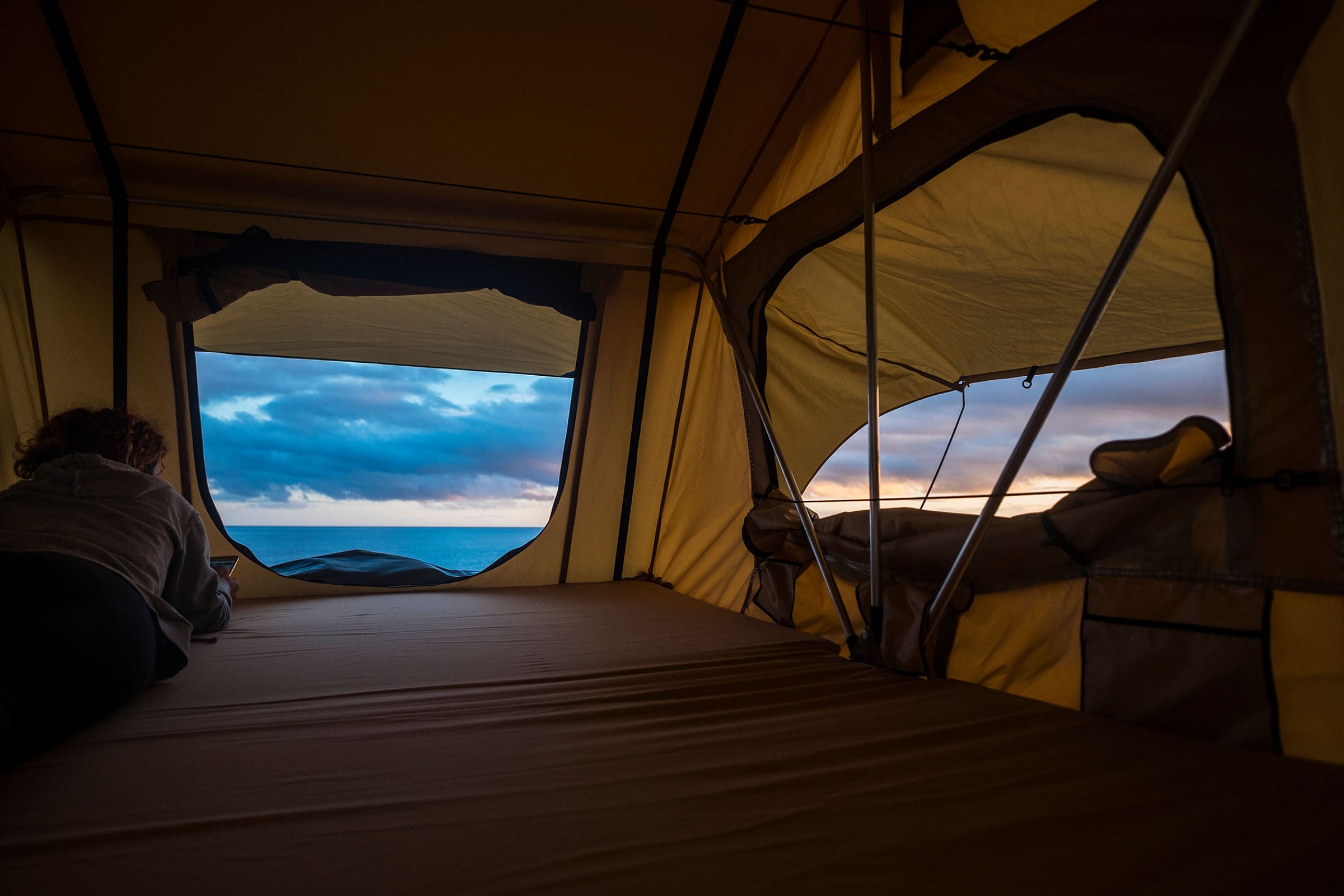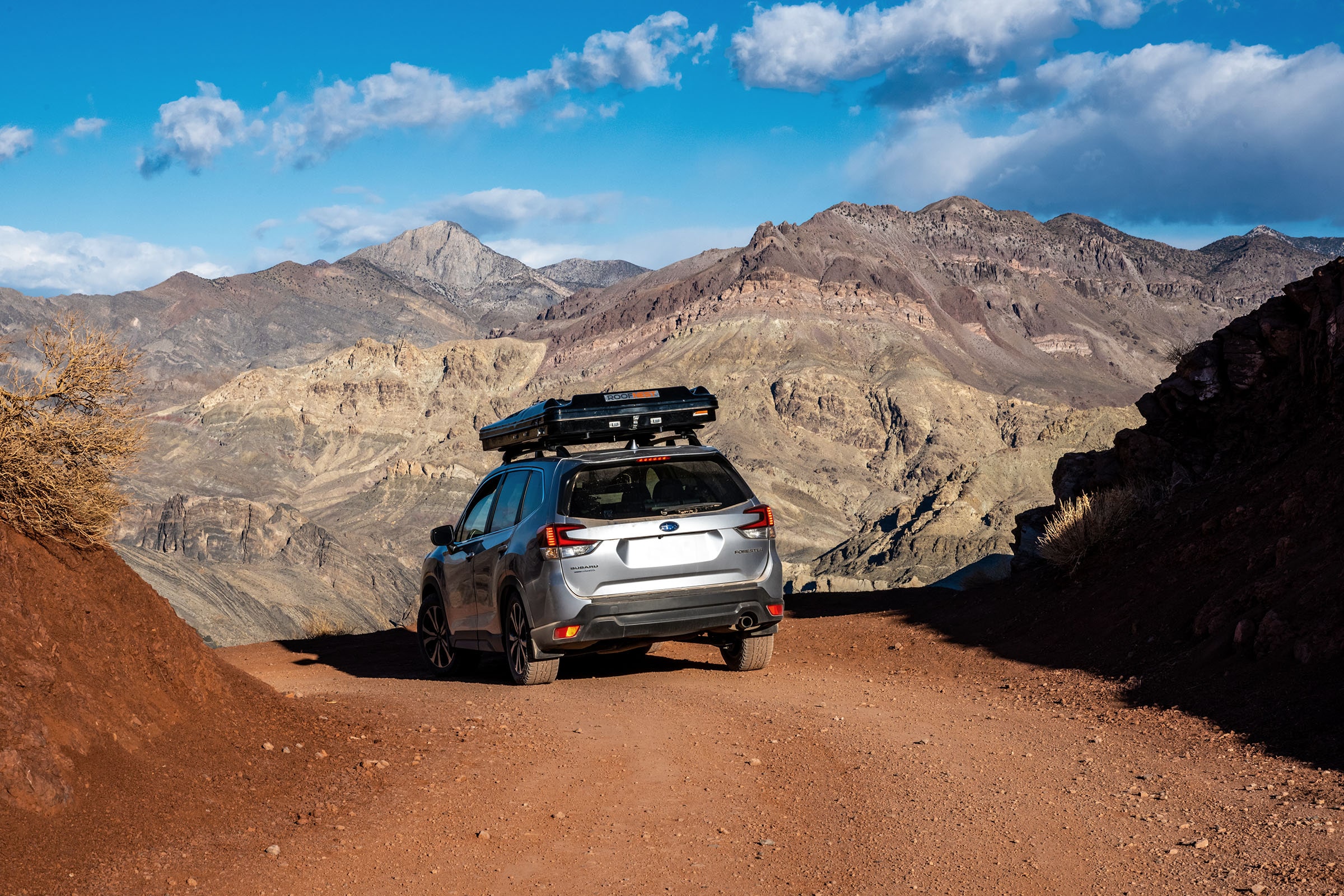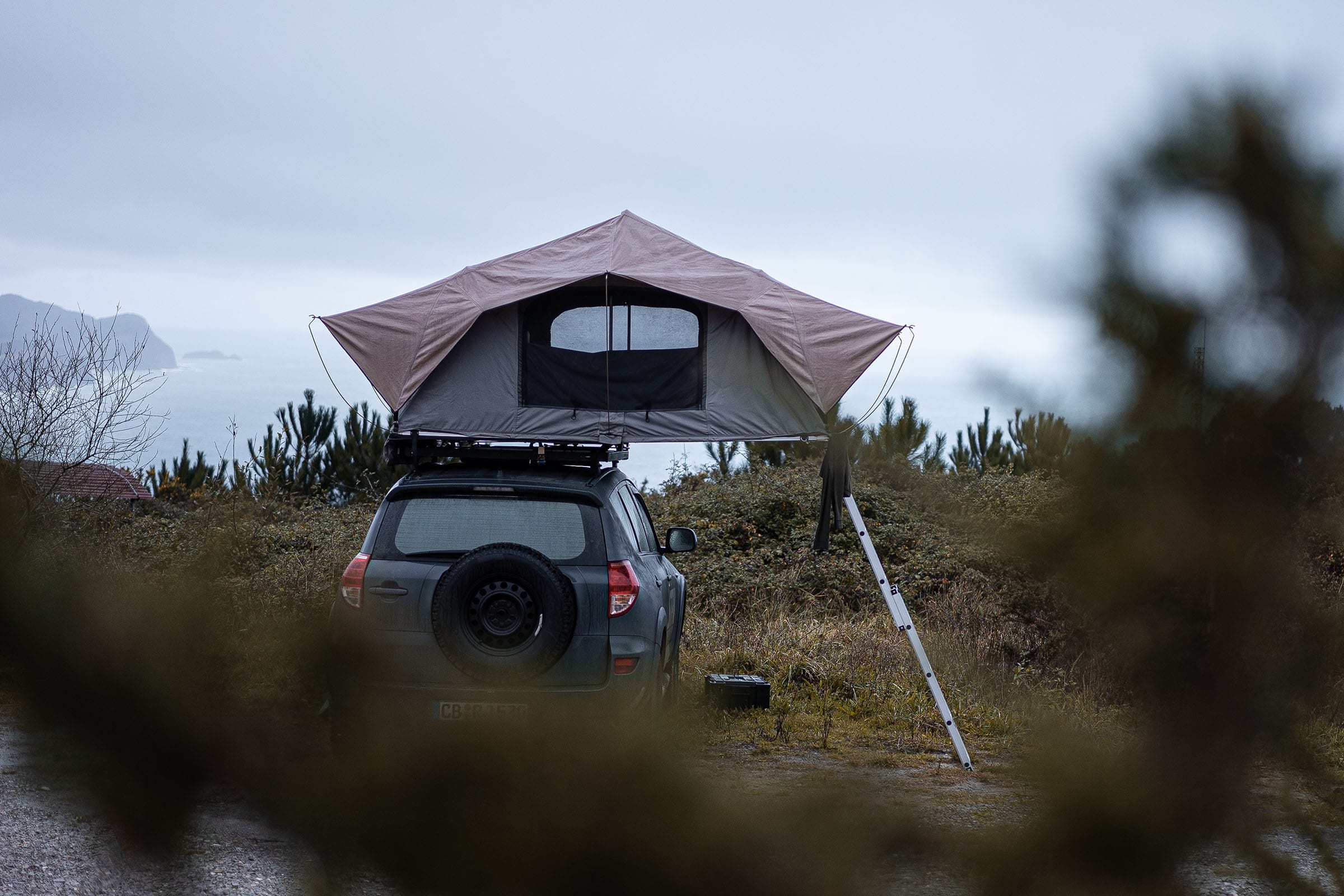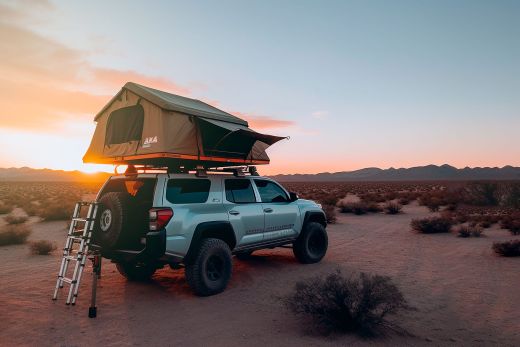Over the past ten years roof top tents have surged in popularity among outdoor enthusiasts. By raising your sleep setup above the ground, rack-mounted tents offer greater convenience, a higher level of safety, and a better view. But, could there more to roof top tents than there seems to be at first glance? Well, that’s the purpose of this article – to explain the pros and cons of roof top tents including those benefits and downsides that might be less obvious. Besides looking at reasons to get a roof top tent (and reasons not to), we will also look at whether roof top tents actually are easier to set up and question some claims that don’t check out.
- Two types of roof top tent
- The truth about pitching a roof top tent
- The pros of roof top tents
- The cons of roof top tents
- Claims about roof top tents that don’t check out
Two types of roof top tent
There are two broad categories of rooftop tent, each with slightly different pros and cons. Understanding these is key to figuring out whether a rooftop tent would suit your needs.
Softshell tents
The body of a softshell tent is made entirely of fabric, making this style of tent both lighter and less expensive than hardshell tents. And, because the solid floor under softshell tents can fold over, these tents can also have larger footprints. For example, Front Runner’s softshell tent has an floor area of 2400mm by 1300mm whereas the internal dimensions of the average hardshell tent are somewhere around 1700mm by 1300mm. But softshell tents are not without their downsides: they take more time and energy to set up than hardshell tents, and they require you to park your vehicle in a space larger than the average parking bay.
Hardshell tents
Hardshell tents, as the name suggests, have a solid shell that forms both the cover and the roof of the tent. Depending on the design, this shell can hinge open at one end to create a wedge or it can be raised vertically to form a cube shaped tent. The norm for both designs is to use gas struts to help raise the shell. This feature, along with their simpler design (with no spring rods for doors and windows), makes hardshell tents faster and easier to set up, compared to both softshell roof top tents and freestanding tents. The downsides to hardshell tents are they are more expensive and heavier than softshell tents, and they typically offer less liveable space.
The truth about pitching a roof top tent
The most widely claimed advantages of roof top tents is that they are much faster and easier to set up than a freestanding tent. But that is only true of hardshell tents. With a softshell tent, you first have to take off the cover and remove the compression straps. Depending on the design of the cover, just this could take a few minutes. Next, you have to fold out the platform and extend the ladder – most foldable tents will deploy as you do this. Finally, you have to install the spring rods in the windows and doors. This whole process takes at least five minutes – roughly the same amount of time it takes to pitch a dome tent. Of course, softshell tents have other advantages, but I will leave these for my guide on how to choose a roof top tent.

How much easier and faster is it to pitch a hardshell tent? That depends on the design. Many models feature gas powered struts, which makes the process much easier. All that the camper has to do is unclip the latches that keep the tent closed and then give each end of the tent a push upward. The gas struts do most of the work from there, keeping deployment time to under 90 seconds. Being able to set up or break down your tent this quickly is a real advantage if you are going to be moving frequently and will need to take down your tent before going on day trips. Lastly – and this applies to both hardshells and softshells – many tents allow you to leave the mattress (and sometimes even the sleeping bag) inside the tent when it is folded closed. This can shave maybe another minute off the time needed to prep your sleep setup.
The pros of roof top tents
Besides a quick and easy setup (hardshells only), there are a few other benefits that apply to almost all roof top tents.
View
To the casual observer, the most obvious advantage of a roof top tent (besides maybe safety) is that it puts you in an elevated position from where you can get a better view of your surroundings. If the idea of waking up to a panoramic mountain vista sounds good, this gives roof top tents a clear win over freestanding tents. I also suspect that on a deeper subconscious level, we all still want to play in treehouses, and a roof top tent satisfies much of that unacknowledged desire.
Safety
No tent will keep you completely safe from wildlife, but having your tent on your roof makes it a lot less likely that some furry intruder will get into your tent. This concern is especially valid when there are large predators about, but a raised tent can also keep slithering and crawling visitors out of your sleep space – and these are a lot more common. Lastly a roof top tent will keep you safe from the most dangerous animal of all: a reckless and unobservant driver who might not see a freestanding tent in low light.
Black-out ability
Roof top tents tend to be made from heavier materials than freestanding tents (with the exception of canvas tents). This makes roof top darker inside, which can make it easier to sleep when it’s light outside. This can be especially useful when summer camping above the 46th parallel, where the sun can rise very early and set very late. If this black-out ability is important to you, look for a tent made of thicker material. The thinnest material in roof top tents is around 250gsm while the heaviest material is around 400 g/sm.
Durability
The heavier material used in roof top tents also makes roof top tents more durable than the average freestanding tent (Again, a canvas freestanding tent will last longer than a polyester or nylon tent). Depending on how well it is maintained and how often it is used, a quality roof top tent will last between five and fifteen years. Freestanding tents, on the other hand, have an expected lifespan of four to eight years.

The cons of roof top tents
Of course, roof top tents are also not without their downsides. These are the things that might make you think twice about getting a roof top tent.
Day tripping
One of the biggest disadvantages to a roof top tent is that you have to take it down every time you drive somewhere. If you are going to move camp every day, this won’t be much of an issue, but if you are going to spend at least a few days in each campsite and use your vehicle for daytripping, you could get tired of having to take down your tent and then put it back up in the same spot. If this sounds like something you would have to do, it would be best to go with a hardshell roof top tent that sets up and breaks down quickly.
Fuel economy and vehicle handling
Roof top tents have gotten much lighter and low profile in the last decade, but they still add significant weight to a vehicle. Hardshell tents typically weigh between 65kg and 85kg while softshell weigh between 45kg and 60kg. This added weight can affect a vehicle’s handling and make it feel less stable, particularly on winding roads or uneven terrain. In addition to this, the extra weight and wind resistance can reduce a vehicle’s fuel efficiency. This effect is felt most with tents that have a raised boxy profile when packed.
Limited capacity
The capacity of roof top tents vary, but you are unlikely to find even a folding softshell tent that sleeps more than 3 people comfortably. It’s also important to note that manufacturers sometimes exaggerate the capacity of their tents. This is why it’s important to look at the internal dimensions of a tent rather than its specified capacity. You might find that a certain three-person roof top tent is the same size as your current two-person freestanding tent. If you don’t already have a tent that you can use as a benchmark, you can use a mattress of a certain size to make a comparison.
Cost
Roof top tents are not cheap. With prices ranging from $1000 to $6000, they can be several times more expensive than freestanding tents. Even if you add the cost of a quality mattress ($600) to the price of the most expensive dome tent ($700), a freestanding tent setup is still significantly cheaper than a mid-range roof top tent. And that’s before you even consider the price of a roof rack, which will cost you around $1000 if you don’t already have one.

Claims about roof top tents that don’t check out
There are at least a few claims made by the proponents of roof top tents that just don’t check out.
Roof top tents are more comfortable
There are three things that affect how comfortable your tent and sleep setup are: your mattress, the liveable area of your tent, and its rigidity (a flapping tent can be very irritating). Roof top tents typically come with a mattress, but with a freestanding tent you have to buy a mattress. And here you have many options including some very comfortable memory foam mattresses like those made by HEST. So, at the most, this is a draw, not a win, for roof top tents. As for liveable area and rigidity, roof top tents are no more roomy or sturdy than similar-sized dome tents, so we can rule out any advantage here as well.
Finding a suitable to spot to camp is easier with a roof top tent
Some roof-top tent enthusiasts have claimed that a roof-top tent offers the convenience of camping anywhere. After all, you don’t need to look for a smooth, flat area to pitch your tent, only a good spot to park your car. In reality, it’s not always easy to find a perfect (or even close to perfect) campsite for a tent on wheels. There are three things that can make finding a site a hassle. First, a parking spot needs to be somewhat level. You can level your vehicle using leveling blocks or rocks, but having to do this every time you drive away and return can be a real hassle. Of course, the sites in established campgrounds are usually (but not always) close to level, but here there is another challenge: deploying your tent when other cars have to fit into what is probably a small parking area.
Learn more
You now know everything there is to know about the pros and cons of roof top tents, but don’t stop here. This was just one of many articles related to overlanding, camping and other outdoor pursuits. If you ever wanted to know how to choose a suitable campsite, how to dial in your sleep system, or how to pack a vehicle for a big trip, you can find all of that and more right here on Trail & Crag.
